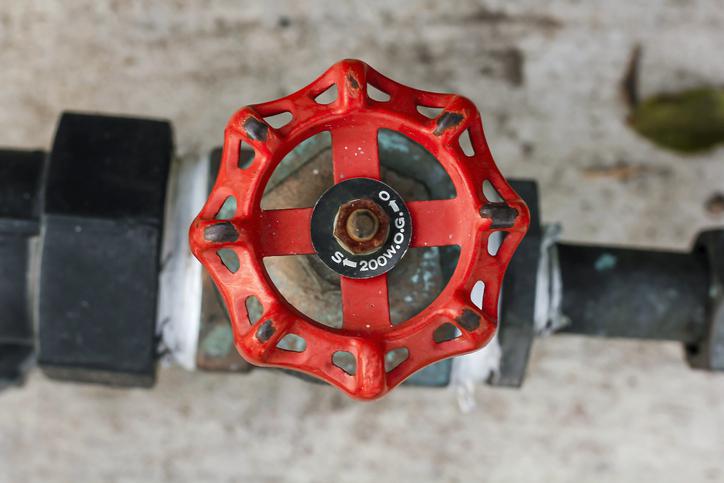
If your household plumbing suddenly springs a major leak, do you know what you would do? Calling your local plumber is a smart move, but it shouldn’t be your first instinct when your home is flooding by the second. This is a time to shut off your home’s main water valve immediately -- but you can’t do that if you don’t know where it is or how to close it.
The main shut off valve is the most important shut off valve in your house. If a pipe bursts, water will flood the space with force. Only turning off the main water feed will halt the problem. When this valve is shut off, the main water line into your house is disconnected from your inside plumbing. The only water remaining is the standing water inside your pipes and in your water heater.
The main shut off valve is generally located in the basement, along the front wall of the house. Look for a pipe coming through the wall, into the house. The shut off valve should be located where that pipe enters the house or just above it. If your basement is finished, look for the shut off behind an access panel or cabinet.
Sometimes, the main shut off valve is on the side of the house or attached to a short above-ground post. But it’s often hidden underground. Look around your home for a small hatch or metal cover, similar to a manhole cover. If you find one marked “water”, open the lid to reveal the water meter inside. If you can’t find the water meter, call your local water authority or plumber to ask about its location.
Expect the valve to be connected to the water line next to the water meter, but know that not all valves look the same. Some are ordinary spigot handles as you’d find on your garden hose faucet. Others are metal flanges that may look like they’re just part of the waterline, so look closely and don’t hesitate to ask your water authority for help.
If your valve doesn’t look like it can be turned by hand, it may require a pipe wrench or a long-handled plumbing wrench called a water key. These can be picked up at any hardware store, and it’s important to have them handy in case of an emergency.
Besides the main shut off valve, your appliances will all have their own shut off valves, too. Below are locations throughout your house where you can find the water shut off:
Sink faucets: Two shut offs can be found under the sink. The left one is for the hot water and the right is for cold. Turn the knobs clockwise to close the valve. The water is shut off only to that faucet.
Toilets: Toilets use only cold water, so there is only one shut off and it will be on the wall behind the toilet. You can follow the water hose line that is attached to the toilet tank back to the wall to find the shut off valve.
Showers and tubs: Showers and tub faucets are located inside the wall with nothing to put a shut off valve behind. If these faucets have a shut off, it would most likely be in a ceiling panel directly below the shower and tub in the ceiling below. Otherwise, you will need to locate your house’s main water shutoff to begin any repairs.
Dishwashers: Dishwashers often have a water shut off under the kitchen sink, near the sink shut off valves. Look for the water supply hose that runs to the dishwasher and follow it back.
Refrigerators: Find the copper tube or mesh tube, and look for a valve on the line. The shut off could be located behind the refrigerator, under the kitchen sink, or in the basement below the refrigerator.
Washing machines: Depending on where your laundry room is located, the shut off may be on the wall behind the washer or in a recessed panel in the wall near or behind the machine.
Water heater: There are two water lines connecting to your water heater. The shut off valve will be on the cold water line, which is generally on the right side. Sometimes there is a shut off valve on both water lines. This allows the water heater to be isolated from the system completely.
Once you know how to shut off all the water to your home, it’s helpful to take a tour of your fixtures and appliances to locate their own dedicated shut-off valves. These are more likely to be the type you can close by hand, but if they haven’t been used in years, they might be stuck open.
To be sure you’re ready for the worst-case scenario, it pays to shut off each valve just to become familiar with the experience. This is a particularly good idea if a valve turns out to be stuck; a little lubricant spray now can make closing a valve quick and easy when every second counts.
If you’re having trouble opening a sticky valve, finding your main water shut-off or any other household plumbing challenges, give Benjamin Franklin Plumbing a call at 1-877-BEN-1776 or contact us online.
We’ll locate the valve quickly for you and if need be, move the shut off value to a more convenient place. In fact, we will gladly tag all of your household shut off valves for you, so they are easy to spot in the future.
